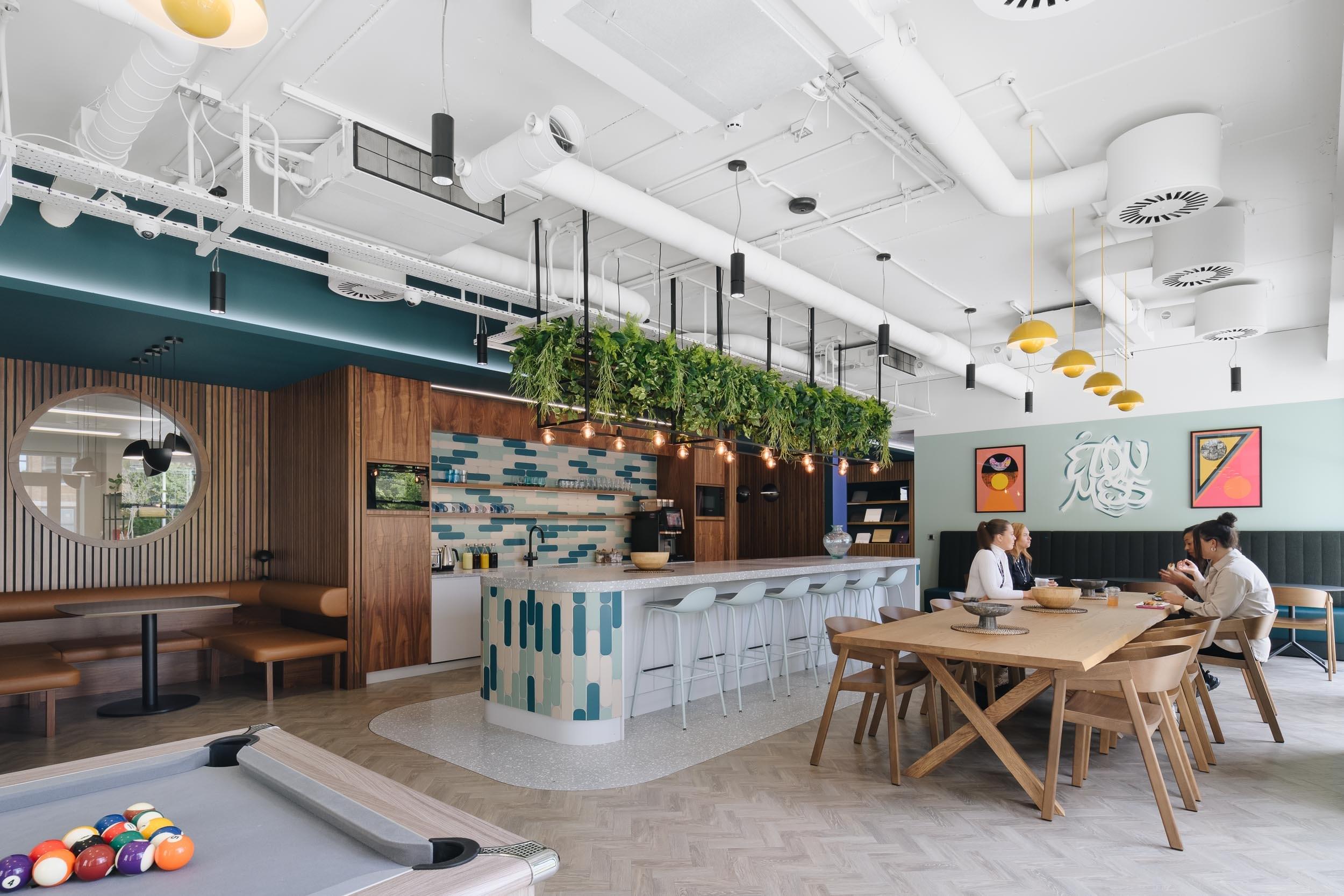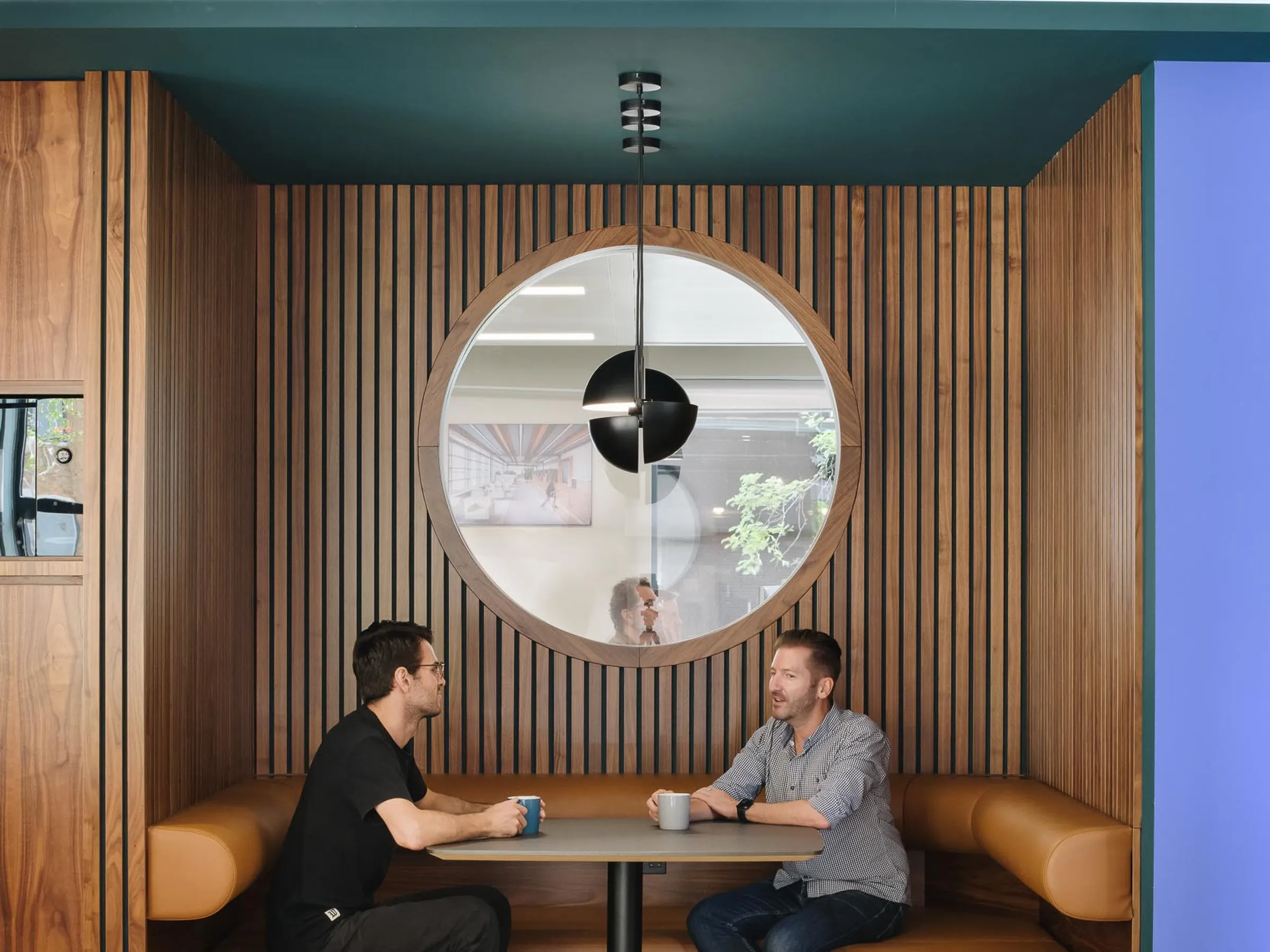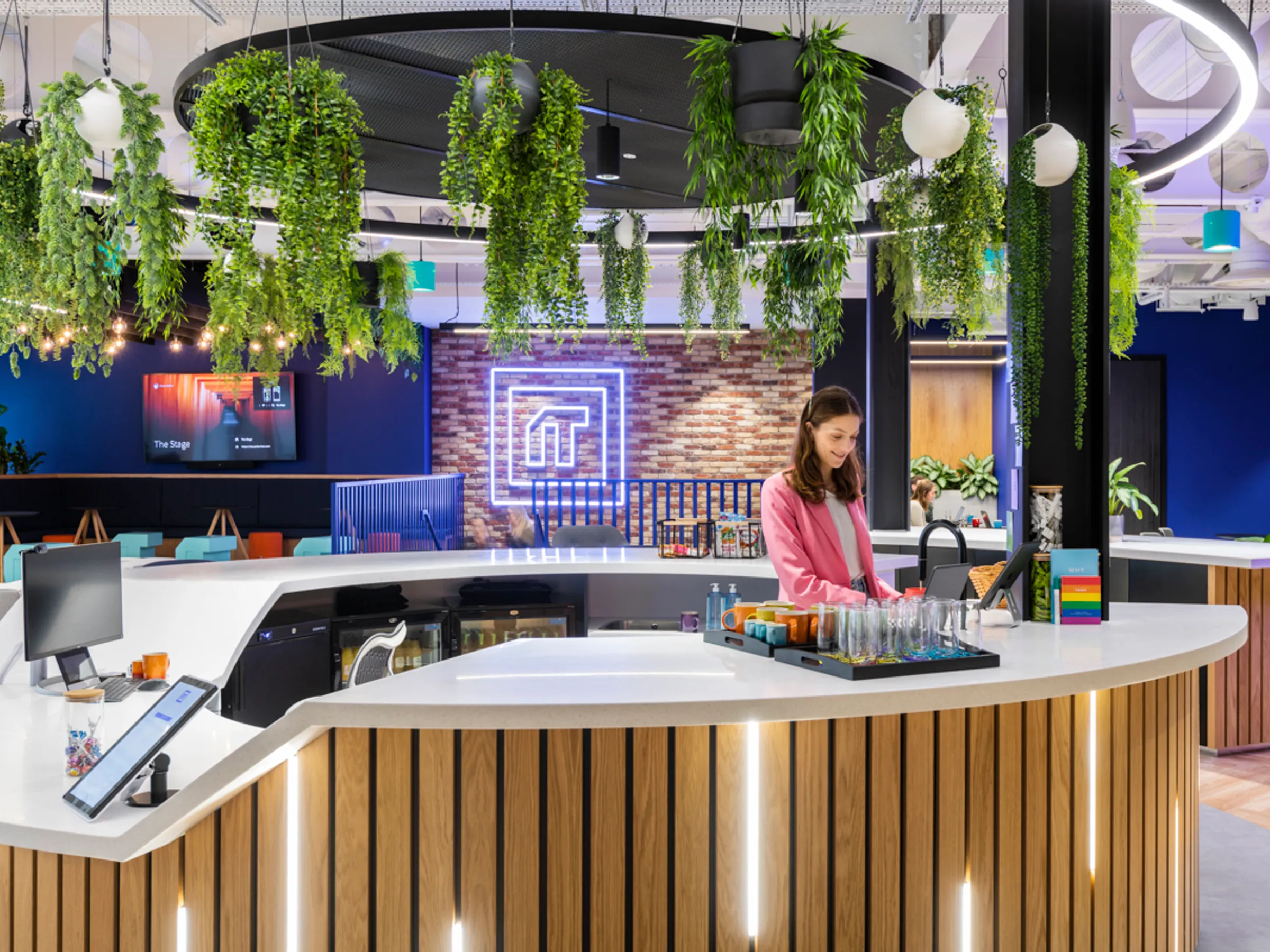Is Your Office Furniture Helping or Hindering Productivity?
Can office furniture actually increase productivity? In this article, we’ll look at how a transformation of workplace furniture can turn productivity around for your business.


Written by
Fritha Selwyn Jones
Contents
Spending roughly one-third of our lives at work puts a strain on our bodies in one way or another. Whether it’s through long periods of sitting down, adjusting to certain lighting conditions, or holding difficult postures when carrying out tasks, the furniture we use at work has an impact on our health and well-being no matter how we use it.
What if we could not only remove the negative impacts of office furniture on health but also find a way for it to benefit the people using it? Can office furniture actually increase productivity? In this article, we’ll look at how a transformation of workplace furniture can turn productivity around for your business.
The Impact of Furniture on Productivity
In our article The Impact of Workplace Design on Productivity, we reviewed a study by Gensler that found UK businesses could be losing up to £135 billion annually thanks to bad office design.
This may seem like an enormous amount of profit to lose due to people being uncomfortable at work, but furnishings in any space have myriad effects on how that space is experienced—not just through how they feel to touch, but their impact on sound, visibility, and the way the space can be used. These experiences together contribute to the state of mind, health, and wellbeing of the people using it.
Let’s break down the ways office furniture can directly impact productivity.
Sensory Element/Experience | Design Considerations | Impact on Productivity |
Comfort | Furniture that promotes good posture, supports the body in use and reduces the risk of injury. | Fewer breaks, greater concentration, reduced risk of time off. |
Visual aesthetics | Well-thought-out colour schemes, shapes, textures, and overall style. | Elevated mood, increased concentration, creative thinking. |
Space use | Decisions on how to incorporate open plan/breakout areas, private zones, and flow of traffic. | Individual spaces are reserved for different types of work. |
Acoustics | Incorporating cubicles, partitions, soundproofing, and sound-absorbing materials. | Greater focus in quieter environments, segregating loud and quiet activities. |
Lighting | Maximising natural light. Decisions on lighting positions, levels, and colours. | Reduction in eye strain, better focus and energy levels, improved mood. |
Organisation | Smart designs, well-thought-out storage, and intuitive furniture positioning. | Reduced time spent finding things, clear environments for focus. |
Flexibility | Modular furniture, adjustable desks and chairs, and movable lights. | Individual comfort and autonomy over one’s workspace to optimise productivity. |
Thanks to an increased focus on the wellbeing of employees at work and improving mental and physical health, the effects of these design considerations are well-documented.
A study on natural light in the office found that when optimised, the use of natural light can result in a drop in eyestrain, headaches, and blurred vision of 84%
A 2021 report on plants in the workplace found that the presence of plants around the workplace contributed to 12% increased productivity.
A study on open-plan offices found that removing cubicles and installing open-bench seating contributed to a productivity increase of 32%.
A study on standing desks found that employees were 46% more productive when using sit-stand desks over normal desks.
It’s evident that some considered changes result in a significant impact on how workers experience space and channel that into productivity. So, where do we start in overhauling the offending furniture?


Signs of Inefficient Furniture
As a workplace furniture consultancy team, the first step towards making your workplace more conducive to productivity involves learning and information gathering. This is when we investigate your current space and how it is used. This is a vital stage because (among other factors):
It helps us understand how your business operates from day to day, teaching us what you need and what you need to avoid.
It allows us to see what works in your space already and what doesn’t.
These observations allow us to understand how current furniture is used, where it falls short, where it’s relied on the most, areas for improvement, and so on. It’s also an important exercise to see which elements of furniture we can reuse and repurpose if that is part of the plan.
There are some characteristics we look for consistently that demonstrate inefficiencies in furniture:
Safety issues: any physical aspects that can cause injury, such as sharp edges, components that jut out, and unsecured parts.
Environmental impacts: placement, type, and nature of furniture that leads to problems like eye strain, discomfort, and temperature issues.
Outdated furniture: worn out, old furniture is less efficient and may not meet ergonomics standards.
Noisy materials: does the furniture amplify sound in the environment?
Back support: so much activity in office space involves sitting down, so we pay attention to seating and how it supports the spine.
Storage solutions: are workspaces cluttered and disorganised? Inadequate storage can slow work down and create kinks in workflows.
Flexibility: chairs and desks should be adjustable to suit all the people using the space. Does furniture need to be moved around so the space can be used in different ways?
Tech integration: the space should support up-to-date tech solutions to optimise productivity.


The Cost of Discomfort
The limitations of unsuitable office furniture and their impact on the productivity of workers mean significant implications on profit. We’ve already seen that, collectively, UK businesses could face £135 billion in losses thanks to poor furnishing choices. So what are the specific financial implications businesses face?
Direct Financial Impact
When you deal with low-quality, old, over-used or inappropriate furniture, you’re more likely to face replacements, repairs and ongoing operational or maintenance costs. This direct financial burden can be avoided by investing in furniture that lasts. Good quality furniture solutions come with long-term benefits.
Another direct implication of poor furniture choices is that on the health and wellness of your team. Where furniture supports your workforce in living well and minimises the chance of aches and pains, straining, and issues like carpal tunnel syndrome, you also minimise the amount of time off your staff may require.
Indirect Financial Impact
The indirect financial impact on productivity is the most relevant one here. Productivity looks different for every business as KPIs differ widely. Generally, productivity is measured in ‘output per unit of input’. This output is affected by furniture in a number of ways.
Uncomfortable, inefficient conditions can lead to decreased focus, pain, tiredness, low mood, and irritability. These issues can result in:
Slower working, reducing the output per input
More mistakes in work that have to be corrected
Strained interpersonal relationships in teamwork
Low mood, contributing to lower quality of work
If a business has this reputation, it can lead to higher employee turnover resulting in training and onboarding costs. This reputation might make it more difficult to hire top talent, and client relationships could be affected, so company culture is affected by workplace furniture, too. Plus, furniture not complying with safety requirements, especially if it results in injury at work, can incur fines. The result of poor furnishing in office design really can be a significant one.
Optimising for Better Output
Balancing aesthetics, ergonomics, and functionality is key when choosing the right furniture for your office space. Here’s what we recommend.
Opt for furniture that supports the natural posture and positions of the body when sitting and standing. Charis should always be adjustable with lumbar support and armrests. Desks should be at a comfortable height (height-adjustable desks that offer a standing option are ideal). If adjustable desks aren't an option, consider monitor stands or height-adjustable monitors.
Choose colours, textures, and shapes that not only align with your brand style but which encourage focus and relaxation. Try to support a welcoming feel and one that isn't overwhelming or overpowering.
Thoroughly consider the operational tasks being performed while using the furniture. Think about where and what type of storage should be used, how technology is incorporated into the business day, and whether the space is small and needs to be rearranged for different activities.
When it comes to rearranging the room, even the potential for this can create a more inspiring, flexible, and easy-to-use environment. Modular furniture caters to a more social, collaborative feel will raise spirits and productivity in the space. These considerations also make way for remote, flexible working models.
Accessibility and adaptability for diverse needs are also crucial. From catering to the needs of disabled individuals to those breastfeeding, and all the way through to more nuanced needs like those with ADHD, making adjustments in the furniture used to accommodate these can vastly improve the efficiency and success of your furniture.
Furnishing for productivity is no formidable task to a professional workplace consultancy, and this act of consideration for your staff can reward you in spades when it comes to a happy, wholesome, productive environment. Find out how we can do this for you by getting in touch today.
Published on
January 17, 2024
Related Articles













